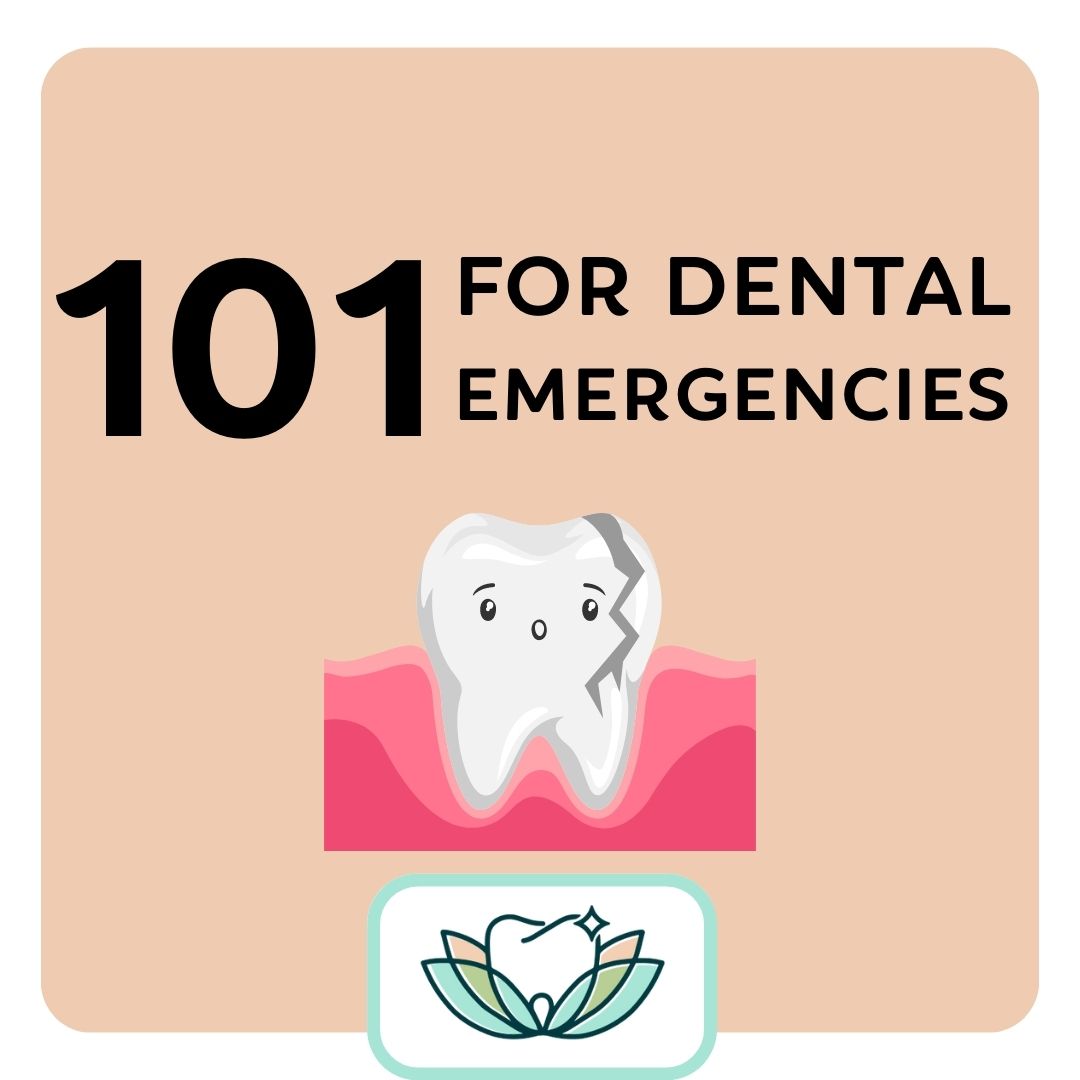
Dental Emergencies 101: What to Do When the Unexpected Happens
Dental emergencies can strike at any time, catching us off guard and causing significant discomfort. Knowing how to handle these situations promptly and effectively can make a critical difference in preserving oral health and preventing further complications. In this comprehensive guide, we will walk you through the steps to handle common dental emergencies, such as knocked-out teeth and severe toothaches before you can reach your scheduled dental appointment.
1. Knocked-Out Teeth:
A knocked-out tooth is a dental emergency that requires immediate attention to increase the chances of successful re-implantation. Follow these steps to handle a knocked-out tooth:
Step 1: Retrieve the Tooth – Pick up the tooth by the crown (the part visible in the mouth), avoiding touching the root to prevent damage.
Step 2: Rinse Gently – If the tooth is dirty, rinse it gently with milk or saline solution. Avoid using water or soap, and do not scrub the tooth.
Step 3: Preserve Moisture – If possible, try to place the tooth back into its socket. If this isn’t feasible, keep the tooth moist by storing it in a cup of milk or by tucking it inside your cheek (be careful not to swallow it).
Step 4: Seek Immediate Dental Care – Time is crucial; visit your dentist or an emergency dental clinic as soon as possible, ideally within 30 minutes of the injury.
2. Severe Toothaches:
Toothaches can be excruciating and often indicate an underlying issue that requires professional attention. While waiting for your dental appointment, follow these steps to alleviate the discomfort:
Step 1: Rinse with Warm Saltwater – Gently rinse your mouth with a warm saltwater solution to reduce inflammation and cleanse the affected area.
Step 2: Floss Carefully – Carefully floss around the affected tooth to dislodge any debris that might be causing irritation. Be gentle to avoid worsening the pain.
Step 3: Apply a Cold Compress – Place a cold compress or ice pack wrapped in a cloth on the outside of your cheek near the painful area to numb the pain and reduce swelling.
Step 4: Over-the-Counter Pain Relief – If you have no known allergies to pain medications, consider taking over-the-counter pain relievers following the recommended dosage.
Remember, these measures are temporary solutions. Dental pain usually indicates an underlying issue that needs professional evaluation and treatment.
3. Chipped or Fractured Teeth:
A chipped or fractured tooth can cause discomfort and may expose the sensitive inner layers of the tooth. Follow these steps until you see your dentist:
Step 1: Rinse with Warm Water – Gently rinse your mouth with warm water to cleanse the area.
Step 2: Control Bleeding – If there is any bleeding, apply gentle pressure with a clean gauze or cloth.
Step 3: Reduce Swelling – Apply a cold compress or ice pack wrapped in a cloth to the affected area to reduce swelling.
Step 4: Save the Fragment – If possible, save any chipped tooth fragment and bring it to your dental appointment.
Step 5: Dental Cement – To protect the exposed area temporarily, you can use dental cement available at most drugstores.
4. Object Lodged Between Teeth:
Having something stuck between your teeth can be irritating and painful. Try these methods to dislodge the object:
Step 1: Dental Floss – Gently and carefully use dental floss to remove the object. Be cautious not to push it deeper between the teeth.
Step 2: Toothpick – If dental floss doesn’t work, you can try using a toothpick with a flat edge or a plastic dental pick to dislodge the object gently.
Step 3: Rinse – After removing the object, rinse your mouth with warm saltwater to reduce the risk of infection.
5. Abscess or Swelling:
An abscess is a painful infection that can lead to swelling of the face or gums. It requires immediate attention as it can spread to other parts of the body. Here’s what you should do:
Step 1: Warm Saltwater Rinse – Rinse your mouth gently with warm salt water several times a day to help reduce the swelling and draw out the pus.
Step 2: Avoid Pressing – Refrain from pressing on the swollen area, as this can exacerbate the pain and spread the infection.
Step 3: Seek Emergency Dental Care – Contact your dentist or visit an emergency dental clinic as soon as possible for proper diagnosis and treatment.
Dental emergencies can be distressing, but knowing how to respond promptly can make all the difference in preserving your oral health. Remember, these first aid measures are only temporary solutions, and it’s crucial to seek professional dental care as soon as possible after encountering any dental emergency. Regular dental check-ups and preventive care can also help in reducing the risk of sudden dental crises. Always be prepared, stay calm, and reach out to your dentist promptly to ensure the best possible outcomes for your dental health.
Dental Emergencies 101
Post a Comment
You must be logged in to post a comment.
